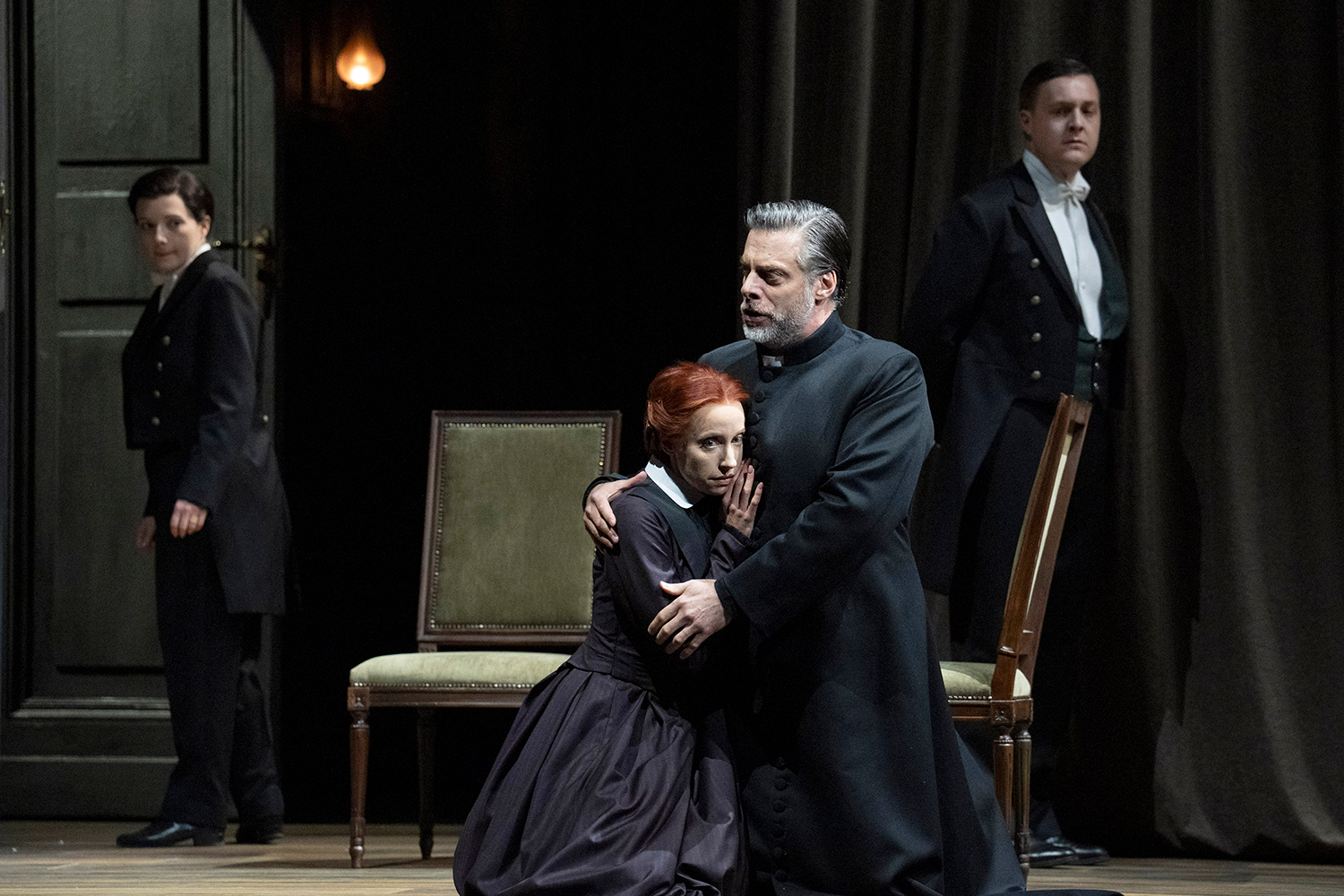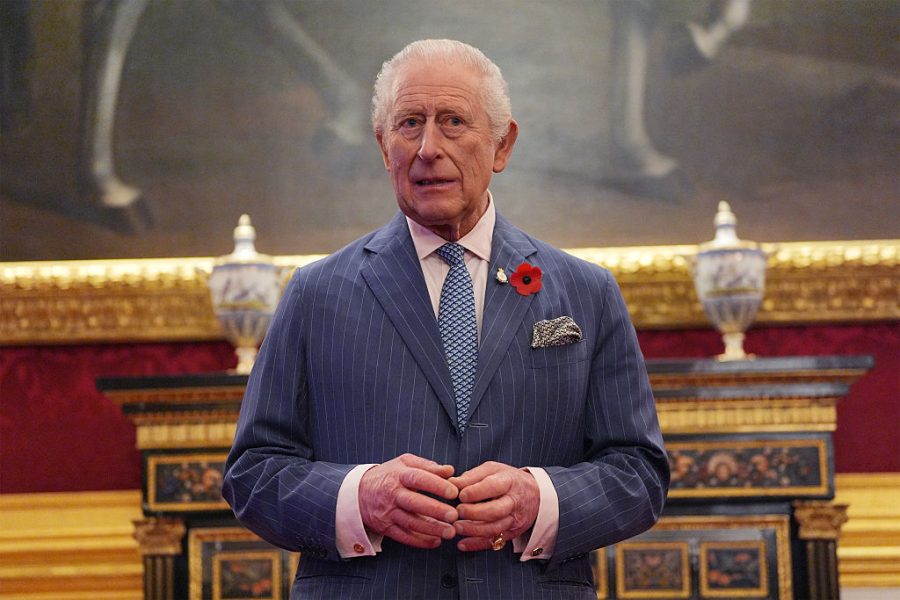
‘Here time becomes space,’ says Gurnemanz in Act One of Parsifal, and true enough, the end of the new Glyndebourne Parsifal is in its beginning. We don’t know that, at first: the sickbed image that’s glimpsed during the prelude doesn’t resolve itself until the opera’s closing scenes. In between, characters appear on stage in multiple forms, at different ages – past and future selves attendant on the present, whatever ‘present’ means in Monsalvat. Wagner, after all, makes it clear enough that time in the Grail Domain moves in mysterious ways, and his whole musical strategy reinforces that truth.
So I can’t get too upset about those multiple personas, even though the presence of miming doppelgangers in an opera production is typically one of the most damaging of gimmicks. In this case, though, and in this opera – well, to quote Gurnemanz again: you see, it is not so. The director Jetske Mijnssen manages the interaction between the figures on stage in thoughtful and expressive ways, finding a language for what she evidently sees as the true subject of the drama: the awakening of compassion between a group of damaged, all-too-human characters. The deliberate pace of Wagner’s score allows the visual puzzles to disclose their meaning over time.
Whatever else this is, it’s a sincere and serious attempt to make sense of a work that asks far more questions than it answers. Visually, it’s handsome – in Ben Baur’s designs the Grail dwells amid the dark wood and sombre drapes of a 19th-century mansion. By Act Three, decay (or if you prefer, liberation) has set in; Kundry (Kristina Stanek) has shed her Victorian frock and an altarpiece of Christ has been turned to the wall. The physical symbols of Wagner’s mystery – the Grail and the spear – are insignificant. By the end, they’ve been forgotten or discarded entirely.
That’s certainly consistent with Mijnssen’s conception of a humanist Parsifal. There’s something indisputably moving about Amfortas’s very visible suffering, about Kundry’s small, tireless acts of care; and in Mijnssen’s decision that the redemption that is realised through Parsifal (Daniel Johansson – playing the holy fool as a particularly blank sheet, with an unvarnished way of singing) should extend even to Klingsor (Ryan Speedo Green). The ex-sorcerer survives the second act to become the embodiment of the spear – the agent of healing – in the third
We’re a long way here from the letter of Wagner’s text, but not – I’m persuaded – from its spirit. For that, it’s possible to overlook the occasional directorial cliché (the knights subject Parsifal to a vicious hazing, because in 2025 every all-male group is automatically toxic). More troubling is the general rejection of the numinous, an intellectual conceit of the last half-century which feels less and less sustainable today. Visually, at least, there’s no glimmer of sunlight over the Good Friday meadow (in fact, there’s no meadow) and a fall of snow at Titurel’s funeral seems less like a contradiction of Wagner’s instructions (though it is that) than an opportunity for some cool production photos. That did jar a bit.
On the other hand, we have characters here who contain worlds, with Stanek’s Kundry the most complex and fascinating of them all – shifting from feral sensuality to an almost saintly composure, sometimes with her eyes alone. As Gurnemanz, John Relyea sings with golden dignity and depth. John Tomlinson is a startlingly raw Titurel and Audun Iversen realises Amfortas’s sufferings with harrowing intensity.
Enfolding and ennobling it all is orchestral playing of quite extraordinary beauty from the London Philharmonic Orchestra under Robin Ticciati. There are sunset-coloured clouds of brass; the basses glide quietly in the depths, and pianissimo strings and woodwinds make the air around Kundry’s laments shimmer with suppressed tension – with clarinet playing, in particular, of baby’s-breath delicacy. If you have a low tolerance for directors with strong ideas, you could keep your eyes shut, and you’d still be richly rewarded. But you’d be a greater fool than Parsifal if you did.
Alternatively, get along to Covent Garden where they’re reviving Gounod’s Faust in David McVicar’s eye-popping Second Empire staging, which collides the visual stylings of Les Mis and Phantom of the Opera, then spoons Moulin Rouge over the top.
Ragamuffins wave tricolores, showgirls in fishnets are tastefully wicked, and Méphistophélès (Adam Palka) sings suavely in his tailcoat. Faust (Stefan Pop) barks away downstage with arms thrown wide; it’s not the most seductive of voices but Carolina Lopez Moreno is ideally sweet and luminous as Marguerite. She appeared to be enjoying herself hugely. It ends with heavenly choirs, billowing clouds, and the intervention of Gounod himself in a pair of angel wings. If you’d begun to wonder just how seriously McVicar takes this big gooey wedge of operatic Camembert, there was your answer: exactly as seriously as it deserves.








Comments